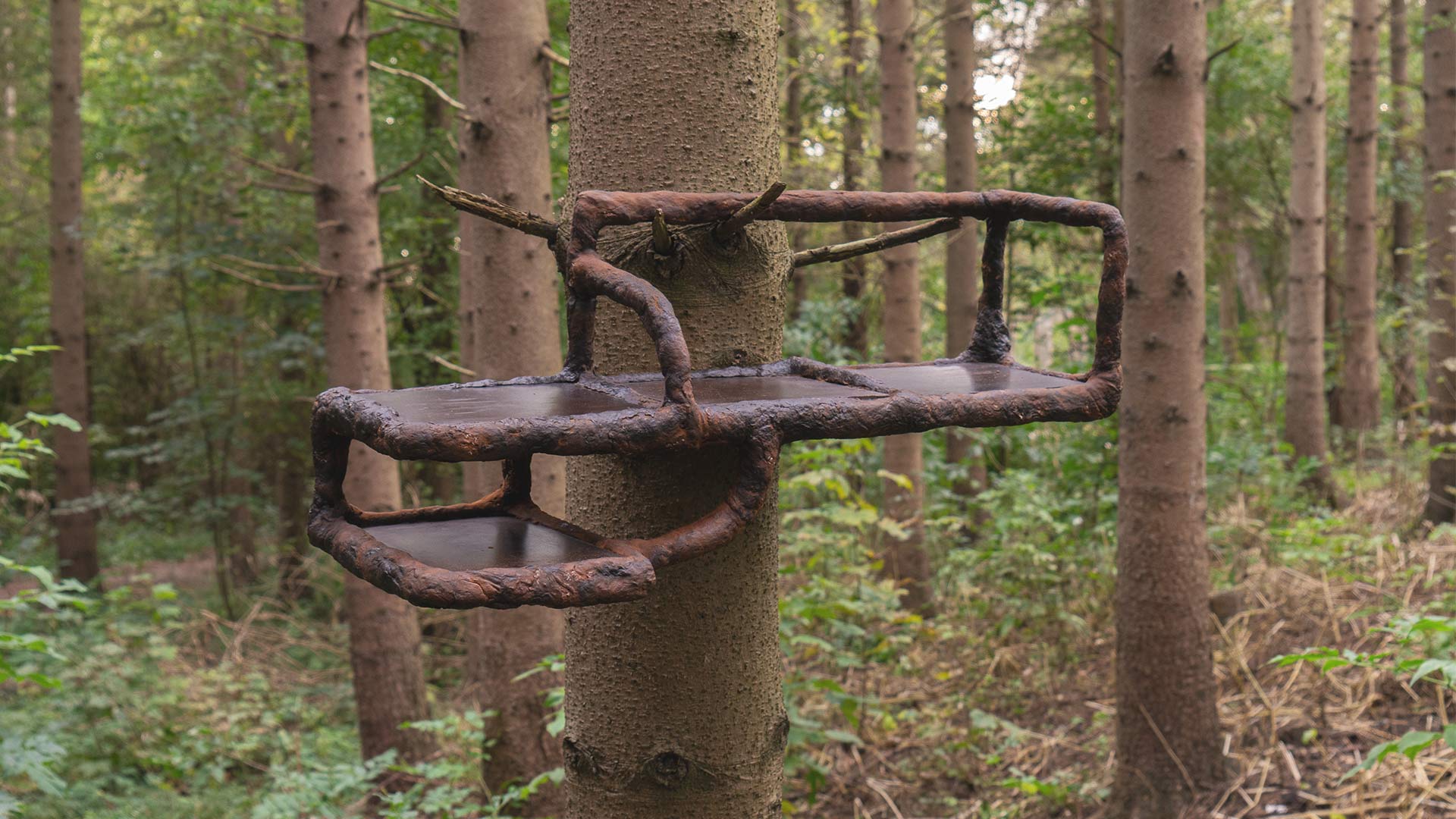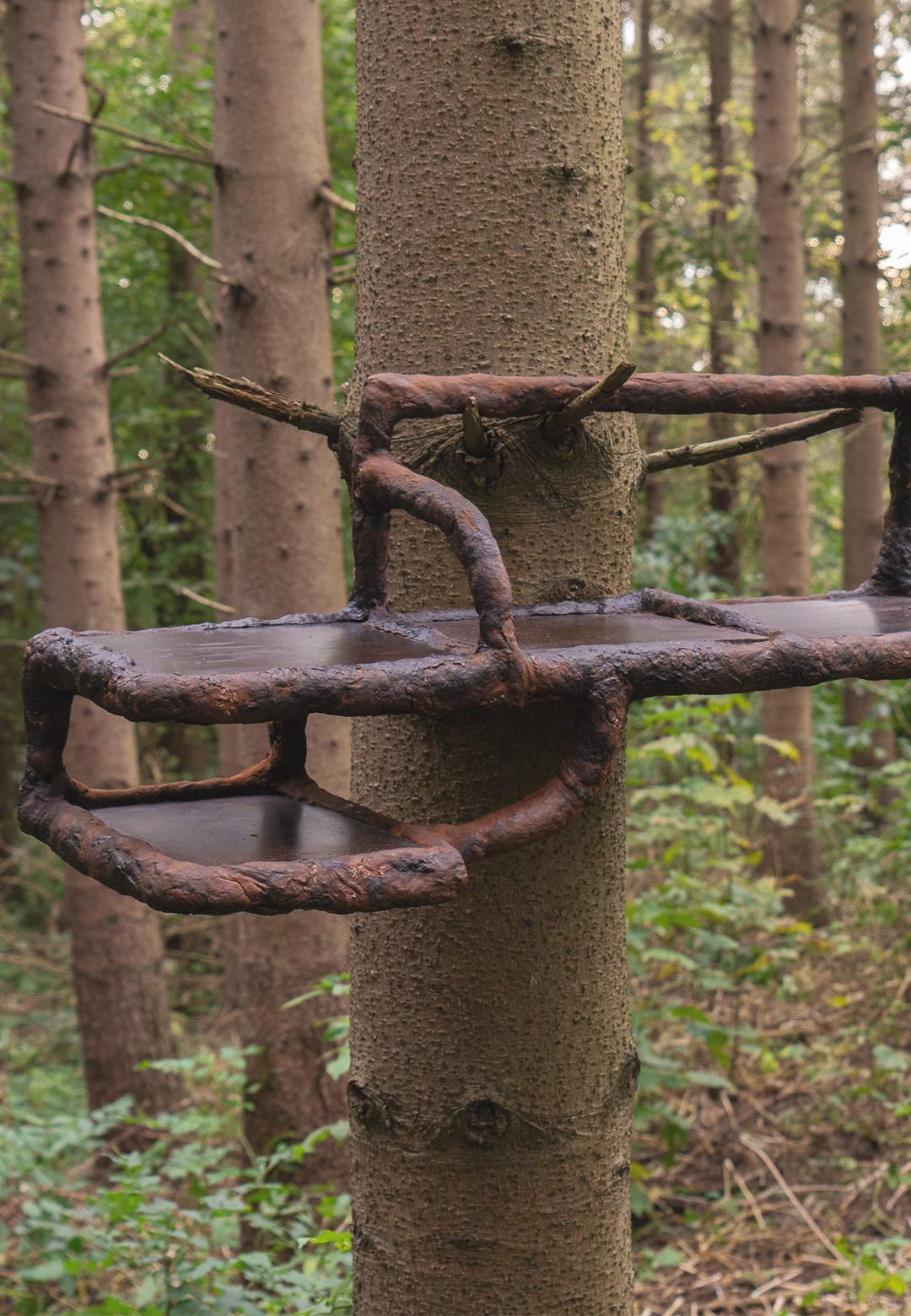"How would we treat a piece of paper if we could see the tree it's made from?" This compelling question posed by ecologist and author Robin Wall Kimmerer forms the philosophical cornerstone of German designer Basse Stittgen’s Tree-ism project. In a world where industrial production has severed the connection between the products we use and the natural world from which they originate, this design- research project is a powerful reminder of the very essence of design.
With Tree-ism, Stittgen embarks on a captivating exploration of the journey that lignin and cellulose, two of the most abundant organic polymers on earth, take from the heart of a tree to our everyday lives. This journey is not just a physical one; it is also a spiritual and environmental quest, aiming to bridge the gap between consumers and the sources of the materials, fostering mindfulness and a profound connection to nature.
The designer’s deep fascination with lignin coupled with the underutilised potential of the material is what inspired him to dive into this project. He further elaborated in a comment to STIR saying, "I’ve heard about lignin for the first time maybe five years ago and since then I was intrigued by it and always wanted to try working with it. Being busy with other projects in parallel to the difficulty of actually sourcing it made me start only now. I think it is highly fascinating that one of the most abundant natural polymers globally is an underutilised by-product of the paper industry, this made me want to explore it and see what I can do with it”.
Lignin often overshadowed by its more celebrated counterpart, cellulose is a brownish substance extracted from trees such as the European Spruce (Picea Abies). While cellulose finds extensive use in various industries, including paper and textiles, lignin has remained largely unexplored and is frequently burnt in thermal waste plants for energy production, resulting in negative emissions. The core of the project revolves around the reconnection of these two polymers.
Stittgen’s mission is to recreate the natural bond between lignin and cellulose that occurs in the outer cell walls of plants. The product designer states, “At a structural level, the material emulates the natural synergy of lignin and cellulose mirroring their role in binding cellulose fibres within the outer cell walls of plants. Essentially, lignin functions as the adhesive, while cellulose serves as the structural element. The underlying concept goes beyond crafting novel materials; it is about narrating a compelling story of reuniting these polymers that have been estranged during the industrial processing of trees in paper production.
The Tree-ism project is far from theoretical, it manifests in three distinct material forms. First is the Thermoformed Biocomposite, a material blend of lignin and cellulose which are introduced into a metal mould. Subsequently, they undergo a rigorous heat-pressing procedure at 180˚C subjected to 10 tonnes of pressure. This method activates lignin’s inherent binding properties. The outcome is a remade wood bioplastic, bridging the gap between nature and industrial innovation.
The second manifestation takes the form of Polymer Clay, crafted from Lignin Sulfonate, cellulose fibre and water. An intriguing by-product of the paper production process, it is proof of the various forms lignin can adopt, depending on the production methods used. Through the Kraft pulping method, lignin becomes soluble through sulphates. This water-soluble lignin presents a unique opportunity to foster hydrogen bonds between lignin polymers, resulting in a robust, entirely plant-based polymer clay devoid of synthetic components.
The third aspect of the project involves the development of Ink/Coating, a composite mixture comprising lignin, Arabic gum, turpentine derived from the orange tree, linseed oil and water. This versatile ink finds utility in silkscreen printing on cellulose-based paper. It can be applied as a protective coating for both polymer clay and Theoformed Biocomposite, rendering them water-resistant. This not only enhances their durability but also increases the use of natural components, furthering the project’s commitment to sustainable design and resourceful innovation.
Both these raw materials are renewable and often sourced as by-products or end-of-cycle products. Moreover, lignin’s capacity to capture carbon makes these materials eco-friendly. However, the designer underscores the significance of responsible sourcing, especially in light of challenges such as deforestation monocultures. The choice of sourcing partners who share a commitment to sustainability is paramount in ensuring the environmental integrity of these materials.
One of the project’s most remarkable discoveries was the accidental creation of polymer clay during the experimentation process. In the early stages of research, Stittgen focused on heat pressing to activate the glue properties of lignin. During this process, he encountered a particularly sticky type that wasn’t suitable for heat pressing. Intrigued, he explored other methods and uncovered the polymer clay.
In addition to material research, the German designer extended the project’s reach to product design. Inspired by Kimmerer’s thought-provoking question, his objects are designed to reflect the origins of their materials, allowing users to feel the rough texture of bark, trace the yearly rings that mark the seasons and sense the landscape in which the tree grew. He has harnessed the potential of these raw materials to create innovative tables, shelves and lamp design that blend functionality and eco-consciousness.
Looking ahead, this project envisions a more sustainable and regenerative future for design and the industry. Stittgen believes that contemporary lifestyles have disrupted the natural balance by exploiting resources without considering the need for regeneration. He sees these reconnected lignin-cellulose materials as a way to restore the flow of natural elements instead of fragmenting them.
Picturing the future landscape of his ongoing experimental project the designer shares with STIR his vision of creating a harmonious design ethos, he says, “Tree-ism is about bringing nature back into the heart of design and forging a deeper connection to the materials we use. It is about reimagining the relationship between humans and the natural world, not as exploiters but as caretakers of our planet’s resources. Through this ongoing endeavour, we can return to the roots of our materials and contribute to a more sustainable and regenerative future for design and industry”.






 Sign in with email
Sign in with email










What do you think?